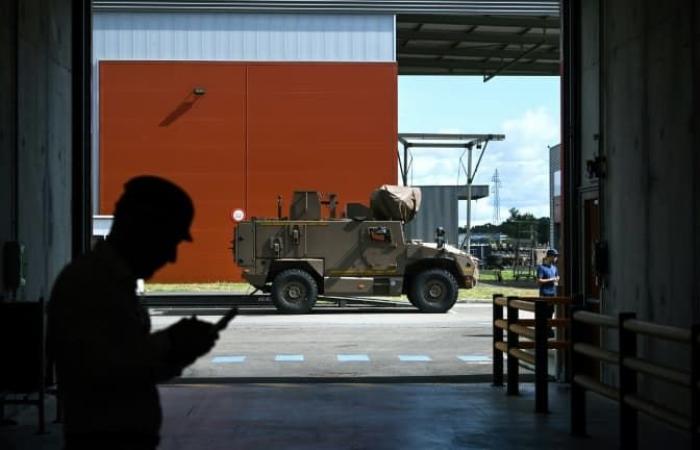Specialized companies in the land and air-land armaments sector form an industrial network established throughout the country. Overview of this sector during the Eurosatory exhibition.
The war economy is not a theoretical concept. This dynamic launched two years ago by Emmanuel Macron during the Eurosatory trade fair (which opens its doors this Monday) – and organized with the Minister of the Armed Forces Sébastien Lecornu – is based on a dense industrial fabric. It consists of more than 4,000 companies and 225,000 jobs.
Some regions are specialized in air or naval equipment, but in land armament, the network covers all French regions. According to data from the latest report from the French Land and Airland Defense and Security Industries Group (GICAT), this category represents 48,000 jobs out of the 210,000 in the entire BITD (defense industrial and technological base). This activity is mainly made up of SMEs which represent nearly 80% of companies.
The major centers of land armament
“The land sector irrigates our territories. From Bergerac to Roanne, via Limoges or backed by the 100 French regiments, land industry dots France and allows many French departments to resist deindustrialization”, notes Thomas Gassilloud, outgoing MP (Renaissance) and president of the National Defense and Armed Forces Commission in the National Assembly.
The distribution of these industries is historically organized according to company specialties. Île-de-France is home not only to the head offices of industry giants, but also to VSEs and SMEs specializing in services. Electronics and air-landing are in Haute-Garonne or Bouches-du-Rhône.
Sites specializing in small, medium and large caliber weapons as well as armored vehicles have, for decades, been based in Loire, Cher, Loiret and Loir-et-Cher. The major centers of land armament are notably in Bourges with the missile maker MBDA and KNDS France (formerly Nexter) which produces, among other things, the Caesar cannon, the production of which has increased sharply since the invasion of Ukraine by Russia. Other important centers are in La Ferté-Saint-Aubin with groups like Thales or in Limoges with Arquus or Texelis.
Produce more, faster and in France
For two years, all of these companies and whatever their size have been put under pressure to produce more and faster, but also to “regain our sovereignty in strategic sectors”. The most cited case for months has been that of KNDS France, which tripled the production of Caesar cannons in just two years to reach a monthly rate of six units.
Another strategic site was also relaunched. It is Eurenco which produces the powder necessary for the shells of 155 millimeters from the Caesar cannon. This site was shut down in 2007 “for the wrong reasons”, according to the Minister of the Armed Forces, who relaunched it two years ago as part of the war economy.
20 billion orders in 2023
In two years, the Eurenco site in Bergerac was put back on its feet and will be able to produce 1,200 tonnes of powder each year from 2025 in order to replenish the stocks of the French army, support Ukraine and participate in the rearmament of Europe. To achieve this performance, this SME, heir to the National Company of Powders and Explosives (SNPE) created in 1915, invested 50 million euros and benefited from support of ten million euros from the General Directorate of armament (DGA).
This war economy is based on a Military Programming Law (LPM) whose budget is increasing by 40% to reach 413 billion euros between 2024 and 2030. Of the 30 billion orders in progress, 20 billion euros were passed by the State to BITD for the year 2023, including 1.5 billion to Arquus, three billion to MBDA, one and a half billion to KNDS France, 2 billion to Safran and 6 billion to Thales.






